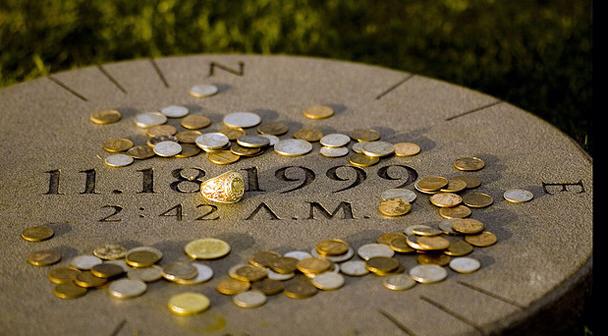In the early morning hours on November 18, 1999 I was doing the initial crisis debriefing for members of TAMECT, Texas A&M’s Emergency Care Team. They are students who volunteer to provide first response at Aggie games and events.
Some of them have had no experience while others are seasoned EMTs and even paramedics. They were on site at stack when it fell and the first responders to triage and treat the victims when it collapsed at 2:42 a.m.
When they were relieved by paid city emergency crews the Commander asked for the first responders who initially handled the scene. He was pointed toward this group of exhausted, dust- and blood-covered 17 through 24 year olds.
“No, no,” he said, “I mean the first medical responders who triaged the scene.” Again, he was pointed toward the student medics.
In stunned disbelief and humility he took off his helmet, and his surrounding crew removed theirs as well. He reverentially went over and shook each and every one of their hands, quietly reassuring them that far more would have died if they had not worked so expertly that morning and thanking them for their service.
These young men and women were shaken up, because it’s one thing to work a wreck, but it’s another to try to save your own, especially after such a horrific disaster. I had the privilege of working with these incredible human beings in the coming months as they, and all Aggies, sought to wrap our heads and hearts around what was seen and experienced that day.
I had fallen asleep in front of the tv watching a movie. The first news report woke me up about 12 minutes after it happened. I was a graduate teaching assistant for the Health and Kinesiology department at the time as I worked on my degree. I threw back on my teaching clothes, a maroon PEAP (Physical Education Activity Program) shirt and wind pants, and headed down there. It was a 5-minute drive.
I was sent to the little trailer that had been set up as command central and found there a friend from my faith community who was the admin on call for Student Services that week and so was currently in charge of the scene. We had just talked at church a week before about my being certified in trauma counseling, so she sent me to find the Care Team folks to provide the initial trauma debrief.
As horrific as that day was, I will be forever grateful to have gained these amazing people, and the UPD Officer who served as the staff mentor for the Care Team program, in my life. (I remain so proud of you all–your hearts, your professionalism, your integrity…I love you!!) It was an incredible honor to walk with them, and they took this “two-percenter” (ask an Aggie what that means) in as part of their family.
I went back and spent the day at the collapse site offering what help I could. I met with the full TAMECT group that night for another debrief and worked with some of them for the next couple of years. I remain in contact with many of them.
I did some good that day, and I also made some bad rookie mistakes that caused damage, I believe. It’s part of what compels me to try to teach others today, mostly healthcare professionals, how to care for those suffering without doing harm out of our discomfort and desperation to try to fix it by offering false hope (as I did for one family) or theologizing or worn out cliches’. I wish we could learn easily and without it being at others’ expense. Unfortunately that isn’t usually the case.
I teach classes of medical and other professional caregiving students on a regular basis. A couple of years ago, I taught a class for the Pediatric Palliative Care course at Texas A&M’s Health Science Center’s College of Nursing. We talked about the mistakes we make in caring when we are not grounded in ourselves. I told them of my regrets from those mistakes almost a couple of decades ago and reminded them that none of us go into these caring fields to do harm.
“But”, I assured them, “you will. It’s just part of being human. The trick is to be able to see them, learn and grow from them, and try to keep improving so we’ll be less likely to repeat those mistakes and do further harm the next time.”
These fresh-faced nursing students were only about 4 or 5 years old, most of them, when another group of young medical professionals their age showed us all how it’s done, and taught me a lot.
So on this day each year, I remember the fallen, but I also remember the Care Team members and leaders who saved lives, had their own spirits crushed and, though this day still haunts them, carry on to continue doing great and life-saving and live-changing things in this world.
Peace to them, and all who care and serve.



